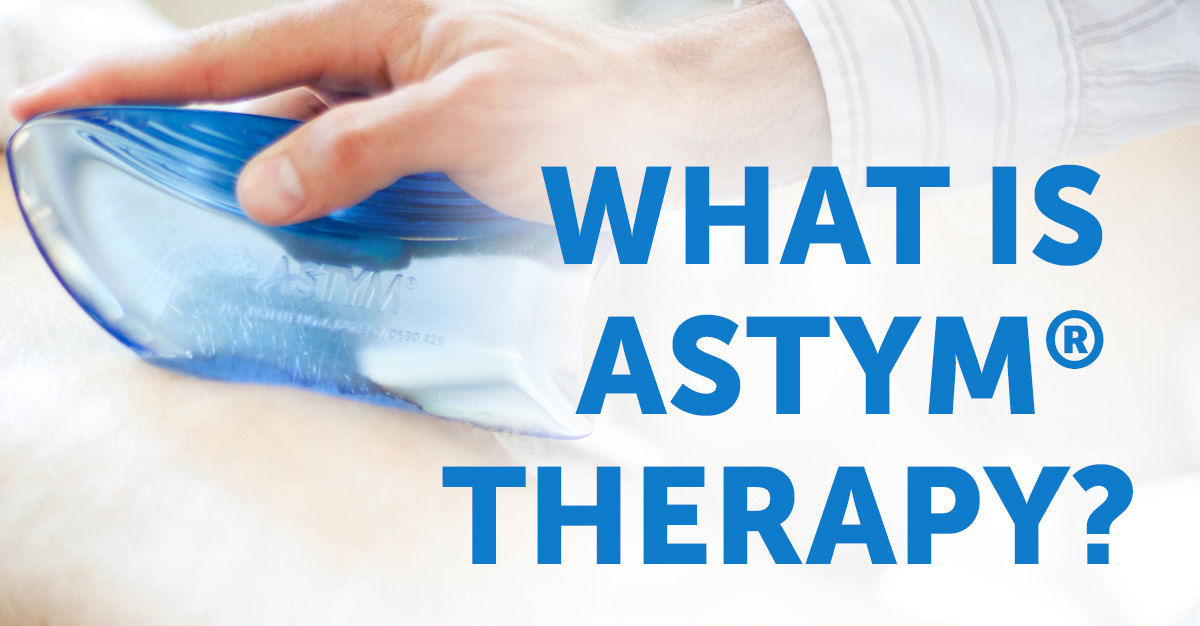
The ASTYM System is a therapy approach that addresses problems such as scarring, fibrosis, and degeneration that occur in soft tissues. These problems may develop as the result of trauma, surgery or overuse. The System is effective for new injuries as well as chronic, nagging conditions.
The ASTYM System uses instruments along the surface of the skin to locate these problem areas and start the body’s healing process. As the body heals, exercise and activity help guide the healing which allows you to return to activities without pain and limitation. The success of the ASTYM System is documented for a wide variety of diagnoses and many times it helps patients where other treatments have failed. The ASTYM System is used in settings ranging from therapy clinics to hospitals to industrial rehabilitation. This proven treatment helps countless patients every day.
Is This New?
The ASTYM System has been used in clinics by rehabilitation professionals since 1996. Thomas L. Sevier, MD, guided the clinical, scientific and outcomes research used to develop the System and document its remarkable effectiveness.
What Can You Expect?
• Clinicians certified in the ASTYM System will use the instruments to treat not only painful areas but also other problem areas that may contribute to your condition.
• During treatment, you may feel areas that are “rough” or “bumpy.” These are the areas that need to be addressed.
• Over the course of treatment, you will notice that as these rough areas smooth out, your pain will decrease and your function will increase.
• Following treatment, you may notice some bruising and soreness to touch in areas that were rough. This shows that the body is addressing the abnormal tissue through the natural healing process.
• You will receive a custom-designed stretching and exercise program to help your body rebuild healthy tissue and allow you to return to an active lifestyle.
• Most patients experience a significant change in their symptoms in the first 3-4 visits.
What’s Different About the ASTYM System?
• It demonstrates success when other approaches have failed.
• It often decreases the need for surgical intervention.
• It provides maximum results with a minimum number of treatments.
• It has high patient compliance.
• It often enables patients to stay on their job or stay in their sport.
• It is supported by scientific research, substantial clinical experience, and an extensive outcomes database.
Diagnoses that Respond Well to the ASTYM System
Patients who are experiencing pain, loss of motion and/or loss of function following surgery, injury, cumulative trauma disorders, and chronic irritation/tendinitis often benefit from the ASTYM System. Some of the clinical diagnoses which have responded well to this treatment are:
• Trigger finger
• Carpal tunnel syndrome
• Lateral epicondylitis
• Medial epicondylitis
• DeQuervain’s tenosynovitis
• Wrist sprains
• Shoulder pain
• Plantar fasciitis
• Chronic ankle sprains
• Achilles tendinitis
• Shin splints
• Patellar tendinitis
• Hamstring strains
• IT band syndrome
• Post-surgical scarring
• Post-surgical fibrosis
• Hip pain/trochanteric bursitis
• SI and low back pain
• Most forms of chronic tendinopathies
• Soft tissue changes associated with degenerative arthritis
HOME INSTRUCTIONS
Stretching
• Perform the stretches you have been taught at least 4 times per day.
• Stretch before and after aggravating activities and when you hurt.
• Hold your stretches for a minimum of 30 seconds.
• Stretch to the point of pull but not pain.
Activity
• Be as active as possible unless your physician instructs you otherwise. Let pain be your guide.
• If your injury has prevented your participation in certain activities, work your way back into them as your pain allows.
Icing
• You may occasionally ice for 15-20 minutes at a time if you are uncomfortable.
• Ice before bed if you have discomfort that disrupts your sleep.
• Place a damp washcloth between your skin and the ice.
Hydration
• Proper hydration is important in the healing process.
• Drink plenty of water throughout the day.


